Observations along Udalo's coast
Local Sea Turtle Species
Three out of the five sea turtle species that roam the Philippine waters, share Udalo's diverse marine and coastal environment as foraging and nesting habitat. The Philippine national law stipulates through the "Wildlife Act" that the DENR shall be responsible for the protection of threatened terrestrial fauna and flora. The subsequently updated Administrative Order (AO No. 2019-09) now lists hundreds of protected wildlife species. All of our three locally observed sea turtles are included and categorized as either endangered or critically endangered.
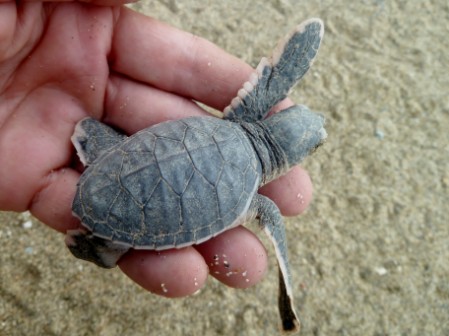
GREEN TURTLE
Chelonia mydas
(Linnaeus 1758)
Weight up to 230 kg
Shell up to 125 cm
ENDANGERED
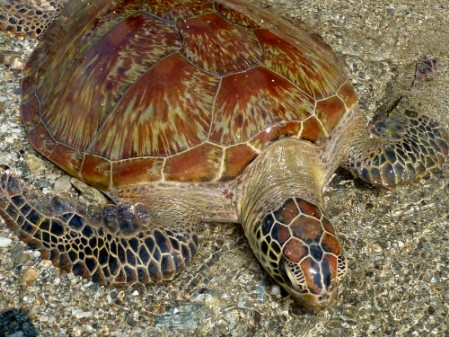
The Green Turtle (or Green Sea Turtle), so named for the green colour of their body fat, lives world-wide in temperate and tropical waters. Rarely observed in the open ocean, they stay near the coastline in protected shore areas, preferably with sea grass beds. Hatchlings and juvenils are carnivors - eating worms, aquatic insects, fish eggs, etc. After reaching aduthood at a size of 20 to 25 cm their diet changes: strictly herbivorius, feeding on sea grass and algae.
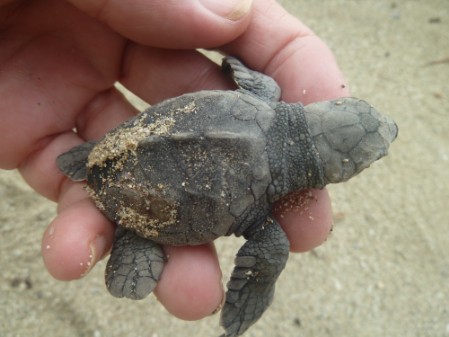
OLIVE RIDLEY
Lepidochelys olivacea
(Eschscholtz 1829)
Weight up to 50 kg
Shell up to 72 cm
ENDANGERED
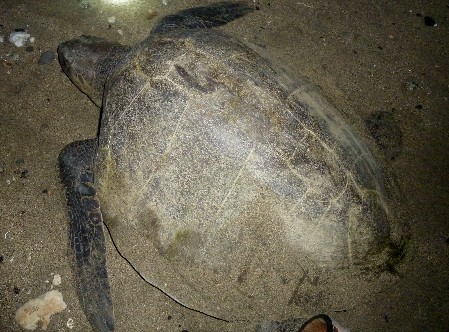
Olive Ridley (or Pacific Ridley Sea Turtle) is named for the oliv-grey/green colour of the carapace. This is a comparatively small turtle with a weight of up to 50 kg. They are known for their mass nesting events called "arribada" (e.g. in Costa Rica). They roam the tropical and subtropical waters of Atlantic, Pacific and Indian Oceans and are omnivorous with powerful jaws for eating crustaceans (shrimps and crabs), mollusks, tunicates and fish.
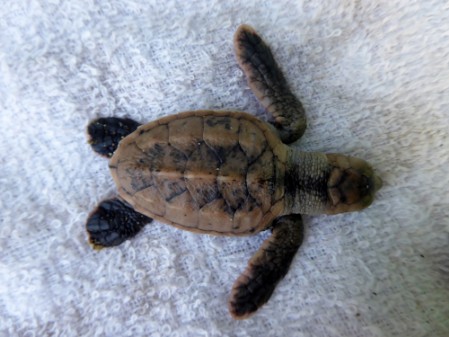
HAWKSBILL
Eretmochelys imbricata
(Linnaeus 1766)
Weight up to 85 kg
Shell up to 85 cm
CRITICALLY ENDANGERED
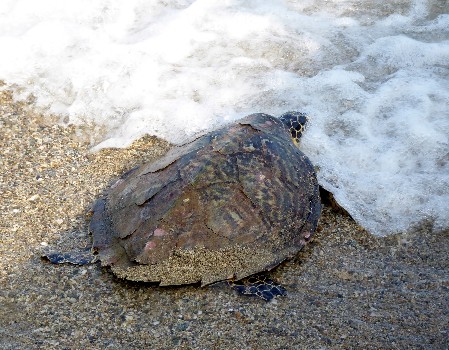
The Hawksbill (or Hawksbill Sea Turtle) is named for the hawk-like beak. They are omnivorous - their narrow head and the beak are ideal for picking sponges, sea anemones, squids and shrimps from crevices in coral reefs. According to their food sources, they stay around coastal reefs, rocky areas, estuaries and lagoons in the tropical and sub-tropical waters of Atlantic, Pacific and Indian Oceans. The Hawksbills face an extreme risk of extinction in the wild. They are categorized as "critically endangered".